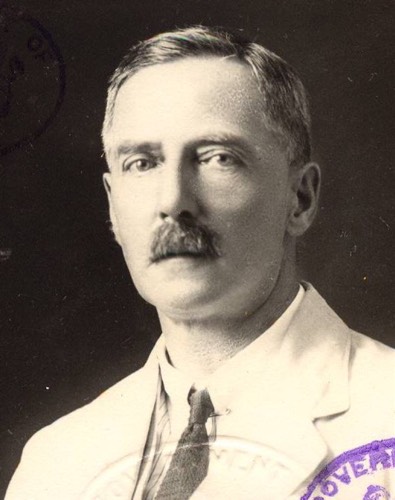
The Miracle Workers Research Project began in 2021, with research volunteers striving to find out more about the 30,000 people who worked at HM Factory Gretna in World War One. In the months since, many fascinating and previously unknown histories have been uncovered. Today, volunteer Stuart writes about his research into Edward George Voss.
When research began into the munitions factory at Gretna an intriguing reference to an Edward George Voss was noted in the works magazine, Mossband Farewell. Voss worked at the section as an analytical chemist but was also connected to the Mexican Eagle Oil Company with a forwarding address in Tampico, Mexico. So who was Mr Voss and what had brought him from Mexico’s dry season to Southern Scotland in the depth of winter? The story, like many others, is complicated.
Edward George Voss was brought up for the most part in Melcombe Regis close to Weymouth on the Dorset coast. In 1899 he left Weymouth College to take a place at the University of London where he studied Experimental Physics. On 8 April 1905 he married Ida Julia Broad and later that same year he took a job lecturing at the General Engineering College, London. The couple lived in Wandsworth for the next four years until Ida died suddenly on 18 August 1909. Edward Voss, however, remarried within a few months; this was to Mona Willingham Richardson. She was well known in Buckinghamshire village of Amersham as one of the ‘Richardson sisters’.
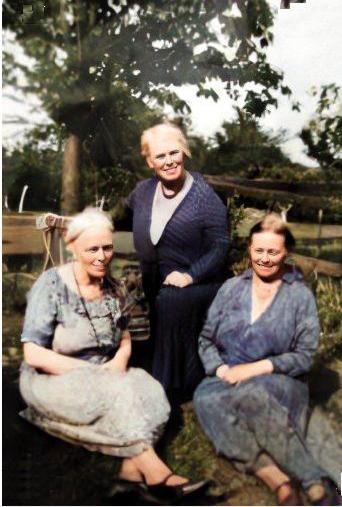
The Richardson Sisters left to right Mona, Josephine and Caroline pictured on the grounds of Tithe Barn
Alison Bailey writing on the sisters for the Amersham Museum web-site described how they were granddaughters of the artic explorer Sir John Richardson. The eldest Josephine, known as ‘Joey’ was an academic and ran a school at Great College Street in Westminster. Caroline or ‘Car’ for short, taught at her sister Josephine’s school, but was also an established painter in watercolour. Mona’s vocation was less glamorous as a sanitary inspector in London’s Chelsea district. Alison Bailey recounts the family story that while the sisters were touring in the Alps, Mona announced that she was going to climb a mountain she had just seen from the train window. Alighting at the next station Mona proceeded to ascend the mountain and it was at the summit that she met Edward Voss.
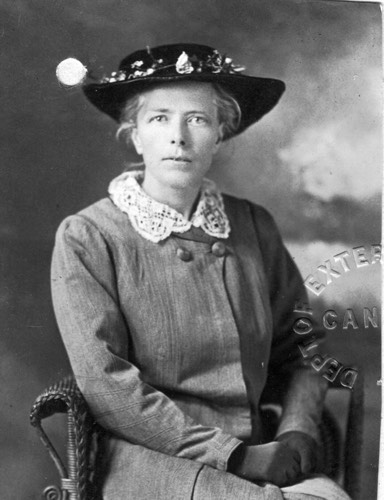
Mona Richardson’s picture from her Canadian Passport, she returned to the UK in 1916
They were married on 30 December 1909 and the following year had a daughter, Elizabeth Willingham Voss, born on 18 November 1910. Edward Voss seemed to have a restless nature and was taken with the idea of farming in Canada. During the late 1900s and early 1910s adverts sponsored by the Canadian Government appeared in the UK press calling for ‘Men to till the Soil’. An article titled ‘Farming in Canada’, published in early 1912 discussed the ‘range of climatic conditions and agricultural possibilities’, in a bid to encourage new settlers. In 1911 Edward traveled to Baynes, British Columbia to establish their settlement while Mona and Elizabeth remained in Amersham with Joey and Car. The following year the Voss family travelled to Canada at the peak of what was termed the ‘third wave’ of immigration into the country. By 1913 however the farming project had been abandoned and the Voss family moved on to Alberta, Canada. The couple’s second child John was born in Calgary in 1915, while Edward did numerous jobs including prospecting and work as an analytical chemist. A year later he saw a new call to work abroad, this time for the Eagle Oil Company in the Gulf of Mexico.
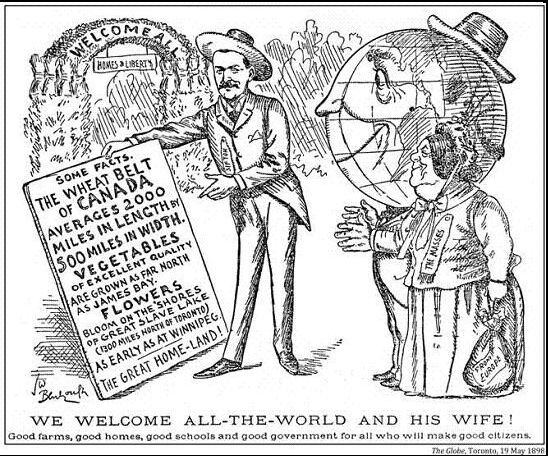
Canadian government sponsored promotion for inward migration 1898
The Mexican Eagle Oil Company was founded by Weetman Pearson in 1909 and was based around the coastal port of Tampico. Operating in Mexico at this time was particularly difficult especially after the outbreak of the Mexican Revolution in 1910. In one instance a minor incident involving Mexican revolutionaries and US sailors, escalated into a breakdown of diplomatic relations and the landing of US troops in Tampico during April 1914. During the spring of 1916 the battleship Kentucky and gun boat Wheeling was sent into the area in response to the activity of revolutionary groups close to Tampico. US troops headed by General John Pershing, also entered the country in response to an attack on Columbus New Mexico, by the revolutionary leader Francisco “Pancho” Villa.
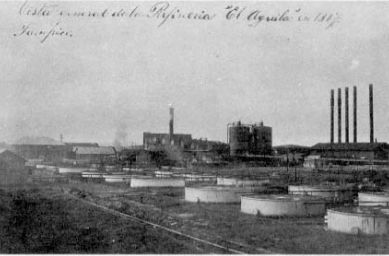
The Tampico oil refinery, over a thousand people worked there and was still under construction when Edward Voss arrived in 1916
It is not clear why Edward Voss should want to travel to such a volatile region but he arrived in the summer of 1916 and worked on the first of two new extensions to the Tampico oil refinery. Voss was taken on as refinery supervisor and billeted in temporary accommodation within the refinery grounds. The majority of the workers came from the US or overseas, with only a small percentage of the total work force drawn from the indigenous population. Author Jack London, described some of the workers that had arrived in Tampico for a column published in Colliers Magazine in June 1914:
The atmosphere was of the West, of the frontier, of the mining camp. I was more nearly reminded of the men of the Klondike than of anything else. In truth, within an hour I had encountered a dozen sourdoughs. Two of them I had known in the old days in Alaska. Said one of whom I had partnered seventeen years before in Dawson City: “Jack this ain’t no Klondike.”
With the environment in Mexico continually unstable, Weetman Pearson was keen to sell up and leave, however, the UK government stepped in and imposed restrictions preventing Pearson from transferring ownership for the duration of the war. The situation became yet more complicated when a communiqué from the German foreign office to Heirch Von Eckardt, German Ambassador to Mexico on 17 January 1917. It proposed offering Mexico financial support and an alliance between the countries should the US enter the war. When this communiqué, known as the Zimmermann Telegram, became public the outrage caused in the US led to Congress voting on 6 April 1917 to declare war on Germany.
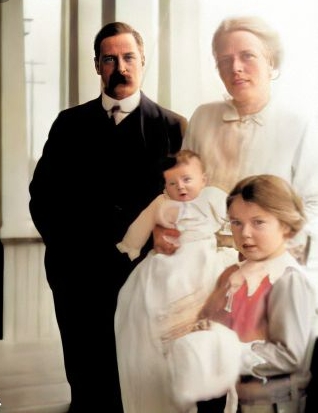
Edward George Voss with Mona and children John and Elizabeth in Canada 1915
With Edward’s prolonged stay in Mexico the decision was make for Mona to leave Canada with children and they arrived in Liverpool from Montreal on 17 November 1916. It seems likely that she returned to Amersham where both her sisters Jo and Carr were heavily involved with the Red Cross. Carr had qualified in First Aid at the British Red Cross Polytechnic in 1916 and worked as a nurse in various hospitals in the south east. Working parties and meetings on first aid practice were also held at the Tithe Barn. With the US entering the war Edward Voss, it seems, was attempted to join the US military and a draft card was registered in New Orleans. Eagle, however, stepped with a posting to Gretna to avoid Edward doing military service as well as retaining their employee.
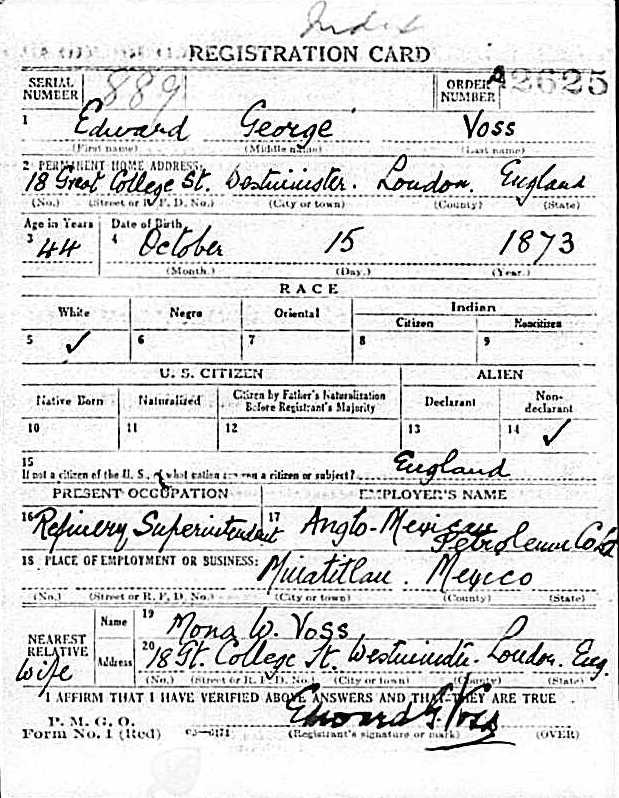
Edward George Voss US draft registration card filed in New Orleans Louisiana 12 September 1917
There is no record of Edward’s journey to Scotland but his family joined him in Gretna and they lived at 19 Victory Avenue. Victory Avenue was a common address for the factories chemists, Edward worked for the most part at the Mossband section. His stay at Gretna was a for about 10 months until August of 1918 when he gained leave to return to work at Eagle Oil, perhaps on a temporary basis. On 3 August 1918 Voss left Liverpool for New York and a connection to Tampico. He never had the chance to return to Gretna, however, as the Armistice was signed on 11 November 1918. By the autumn moves were also made to sell Eagle Oil to Royal Dutch Shell and the sale went through on 2 April 1919. Edward continued to work for the new subsidiary for the next 18 months but returned to England on 29 November 1920.
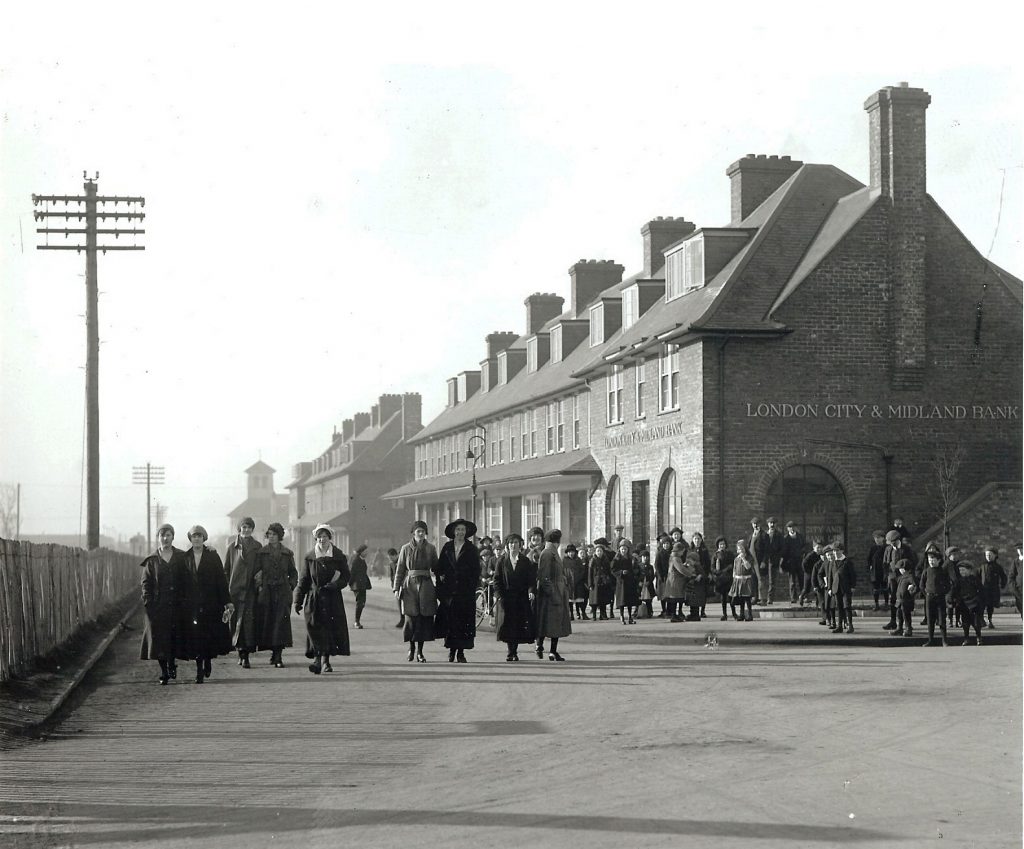
Gretna Township where the Voss family stayed from late autumn 1917 to early summer 1918
The Voss family settled at Ridgecroft on 46 Kings Road in Berkhamstead, Hertfordshire. Mona and Edward continued to travel with Edward working in Canada and Burma while Elizabeth and John were sent to boarding school and often holidayed at Chesham Bois with Joey and Car. Elizabeth Voss was drawn to music buying a treble recorder in 1930. By 1935 she had started The Amateur Musician magazine to promote ‘Music in the Home’ and in 1938 she married one of the paper’s regular contributors, the musician Edgar Hubert Hunt. Together they played a major role in the ‘recorder movement’ which saw the instrument being adopted as a mainstay of music education.
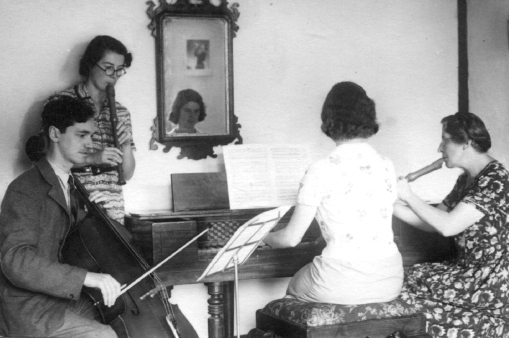
Edgar Hunt seated far left with Elizabeth Voss Hunt second from left during a home performance picture 1939
Edward Voss, continued to travel but it was at his Berkhamstead home that he died suddenly, on 13 March 1939. On Edward’s death Mona returned to Amersham living at Rose Cottage, Chesham Bois. Following the outbreak of war later in 1939 the cottages were once again used for Red Cross activity. Car was commissioned by Bucks Archaeologists Society to produce paintings of buildings of historical and cultural interest at risk from damage or destruction. Josephine died at the end of the war in 1945 and Caroline in 1959. Mona continued to live at the cottages and died at Junipers, Bois Lane, Chesham Bois, on 25 June 1962, she was the last of the Richardson sisters.

